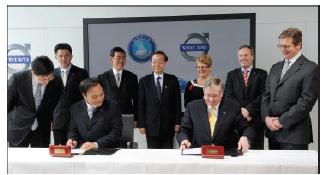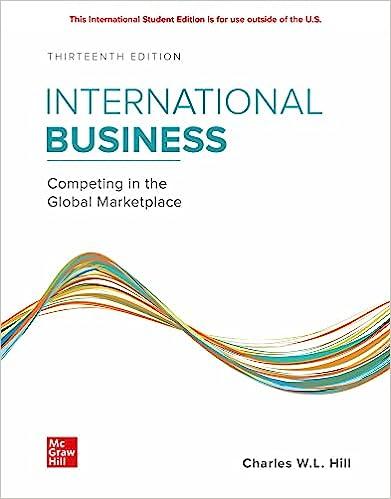Zhejiang Geely Holding Group Co., Ltd (zgh.com)or Geely, for shortis a Chinese auto manufacturer that started in
Question:
Li Shufu reportedly has a great appreciation for design. He scrapped three batches of poorly designed and built models before finally arriving at one that met his expectations: a four-door subcompact sedan introduced in 2002 and known as the Ziyoujian (Free Cruiser in English). In a clear sign that Geely had yet to develop its own design and engineering skills, the car was actually designed by the South Korean firm Daewoo Motors.
It was around this time that Li started to think about owning Volvo, his personal favorite carmaker. Based in Sweden, Volvo had been acquired by Ford Motor Company in 1999 for $6.45 billion. In 2009, Li got his chance when Ford, battered by the Great Recession that had hammered the auto market in the United States and Europe, announced it would sell many of its specialty car brands, including Volvo. In 2010, Geely reached an agreement to purchase Volvo for $1.8 billion. At the time, this was the largest overseas acquisition by a Chinese automaker.

Many observers had low expectations for the acquisition, but they have later been proved wrong. The marriage of Volvo’s brand and engineering design skills with Geely’s manufacturing capabilities has proved to be a winning combination. Today, Volvo cars are still engineered, designed, and tested in Gothenburg, Sweden, and they still retain their Swedish character, but they are assembled at two new plants in China and a new plant in South Carolina, all built after the acquisition.
Geely has big plans for the South Carolina plant. It is now producing Volvo S60 sedans for sale in the United States, but in a few years the plant is expected to be expanded to produce Volvo SUVs, increasing output to 150,000 units a year and doubling the number of U.S. employees to almost 4,000. According to Katarina Fjording, Volvo’s vice president of manufacturing and logistics for the Americas, the U.S. plant required a bigger commitment than those in China, where Geely was already building cars and where it had an established logistics and supplier base. In South Carolina, the company has had to do everything from scratch.
Since the acquisition, China has emerged as a major market for Volvo cars, where the brand is valued for its safety and elegance. The company’s aim is to produce the safest car on the road that handles well under any roadside conditions. Geely has pledge to produce a “death-proof” car by 2020, with a commitment that no one should be seriously injured or killed in a new Volvo. The technologies required to achieve this include auto steering, adaptive cruise control, and pedestrian and animal detection for collision warnings and avoidance, all technologies that are being developed in Gothenburg.
The proof of the strategy is in the sales figures. In 2018, sales of Geely’s Volvo brand rose 12.4 percent year-onyear to a new record high for the 92-year-old brand. All regions contributed to the 642,000 Volvo cars sold. Sales in China grew by 14 percent, and sales in the U.S. grew by 20 percent. China is now the largest market for the Volvo brand, with 131,000 units sold in 2018, followed by the U.S., where 98,000 units were sold.
Emboldened by its success with Volvo, Geely is now making more foreign investments. In 2017, it acquired a controlling stake in the British sports car manufacturer Lotus Cars, a 49.9 percent stake in Proton, Malaysia’s largest car company, and minority stakes in the Swedish Truck Company, the Volvo Group (the one time parent of Volvo Cars), and Daimler-Benz.
Questions
1. Why did Geely acquire Volvo? What are the benefits of acquisition? What are the potential costs and risks?
2. The Volvo acquisition allowed Geely to grow its sales in China. Why might an acquisition have been preferred to simply licensing the brand and know-how from Volvo (assuming that was an option)?
3. Following the Volvo acquisition, Geely built a new, wholly owned factory to produce Volvo cars in the United States. Why was a direct investment strategy preferred to other ways of growing the U.S. market, such as through exporting or licensing the Volvo brand and designs to another producer?
4. What are the benefits of Geely’s investment in South Carolina to the U.S. economy? What are the potential costs? Do you think it was in the interests of the United States to let this investment proceed?
Step by Step Answer:

ISE International Business Competing In The Global Marketplace
ISBN: 9781260575866
13th International Edition
Authors: Charles Hill





